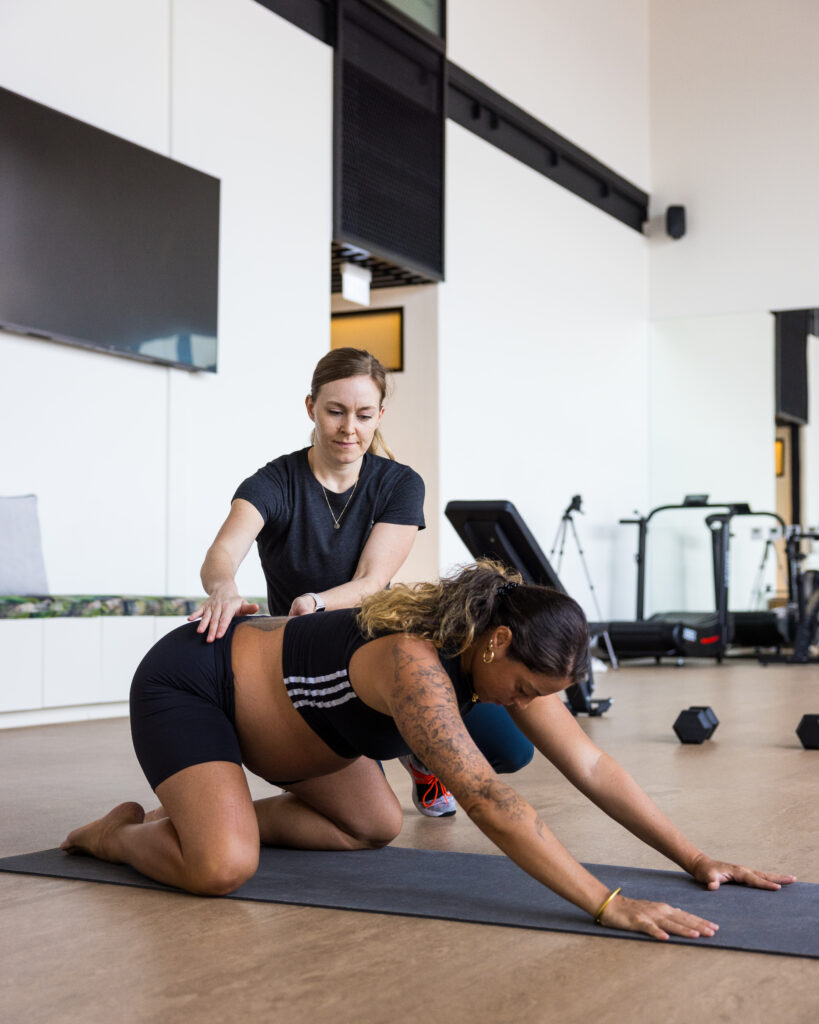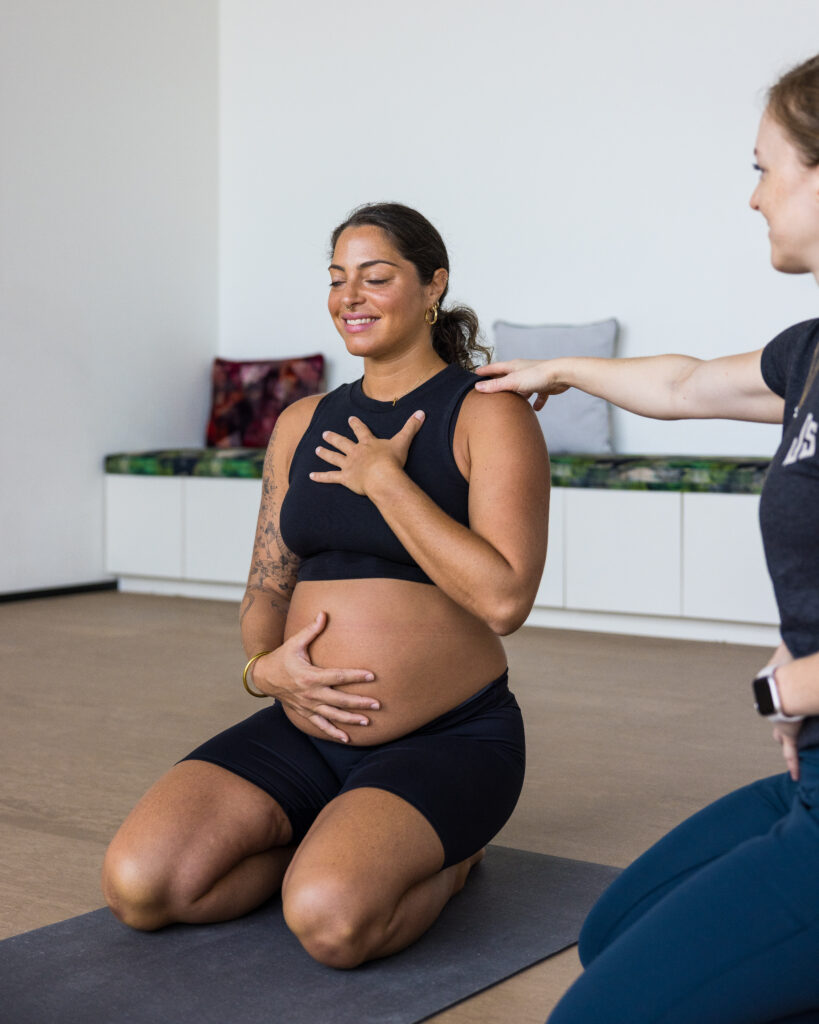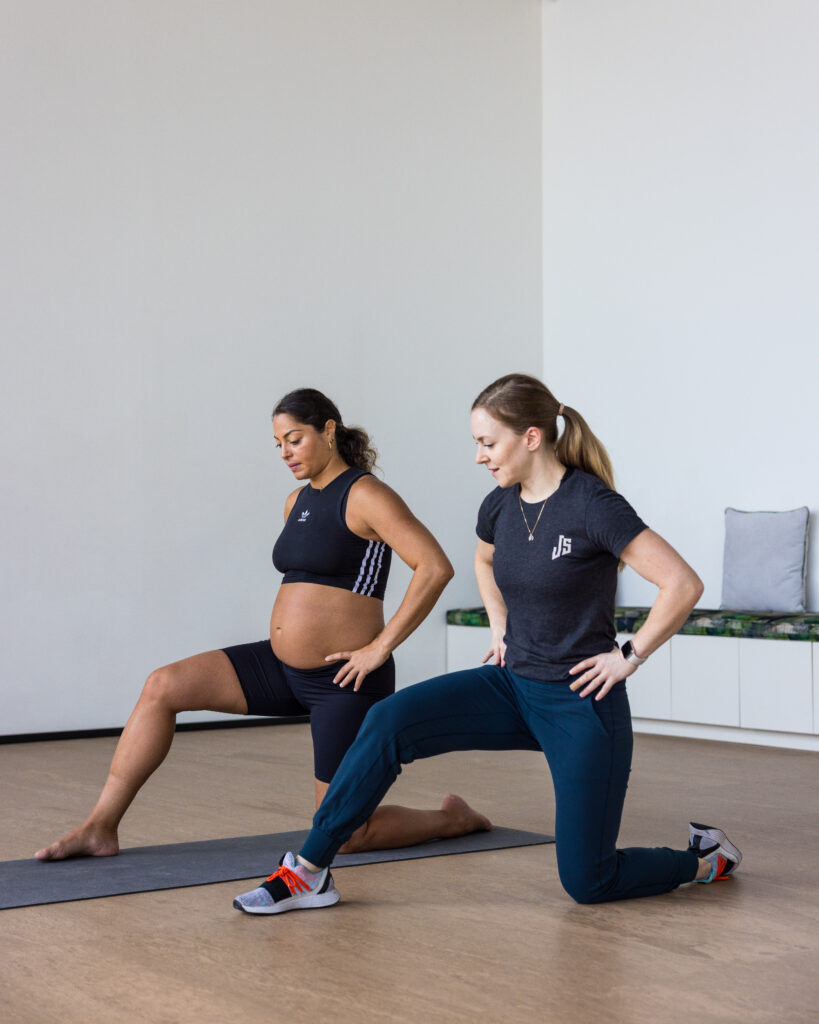PHYSIOTHERAPY, women's Health
Exercise During Pregnancy: Exercising Safely and Effectively Through Each Trimester
As a physiotherapist, I understand the importance of staying active and maintaining a healthy lifestyle during your pregnancy journey. Exercise During Pregnancy can bring numerous benefits to both you and your baby, but it’s essential to do it safely and appropriately for each stage of your pregnancy. In this blog, we’ll explore the benefits of exercising during pregnancy, what activities are safe to do, and what to avoid as you progress through each trimester.
Benefits of Exercise During Pregnancy:

Before diving into the details of each trimester, let’s highlight the positive effects of exercise during pregnancy:
- Improved Cardiovascular Health: Regular physical activity can enhance your heart and lung function, which is vital for both you and your growing baby.
- Reduced Pregnancy Discomfort: Certain exercises can help alleviate common discomforts such as lower back and neck pain.
- Boosted Energy Levels: Staying active can combat fatigue and boost your energy levels, helping you cope with the physical demands of pregnancy.
- Emotional Well-being: Exercise releases endorphins, which can improve mood, reduce stress, and help manage anxiety which can often be experienced during pregnancy.
- Enhanced Strength and Body Awareness: Maintaining strength and body awareness can help prepare your body for the changes it goes through during pregnancy and childbirth.
- Better Sleep: Regular exercise can promote better sleep patterns, making it easier to get the rest you need during this time.
Exercising Safely During Each Trimester:

First Trimester (Week 1 to 12):
During the first trimester, you may continue with your usual exercise routine if it’s safe and comfortable. However, it’s important to listen to your body and be mindful of your body’s response. If you were not active before pregnancy, it’s still safe to start exercising now. If this is the case for you, rather focus on low-impact and lower-intensity activities such as:
- Walking: A simple and effective way to stay active without putting stress on your body.
- Swimming: Great for cardiovascular fitness and general mobility.
- Yoga or Pilates: Helps improve mobility, strength, and mindfulness as well as connecting to your breath.
During the first trimester, there aren’t many exercises you need to avoid. If you were running or lifting weights prior to your pregnancy, it is safe to continue. However, it is important to monitor how your body responds to your usual exercise. If your body is not responding well, you may need to lower the intensity of your exercise.
Second Trimester (Week 13 to 28):
During the second trimester, your bump becomes more pronounced, and your body undergoes significant changes. It’s essential to adapt your exercise routine to accommodate these changes. Safe exercises include:
- Low-impact Exercise: Walking, swimming, stationary cycling. It may be safe to continue some jogging if you have a long-running history, but this would need to be cleared by your Doctor.
- Prenatal Yoga or Pilates: Especially from 20 weeks onwards, it is important to join a prenatal class as certain exercises and positions need to be adapted. For example, certain core exercises that increase intra-abdominal pressure, exercises lying on your back for long periods, or lying on your stomach.
- Strength Training: Resistance exercises are a great way to maintain muscle tone and strength. Focus on upper body and lower body exercises. If you have never lifted weights previously, rather start with resistance bands or very light dumbbells.
Exercises to avoid during this time include exercises that risk falling; be cautious of activities that may increase the risk of falling or injury.
Third Trimester (Week 29 to 40):

During the third trimester, your body is preparing for childbirth, and it’s crucial to prioritize comfort and safety. Suitable exercises include:
- Prenatal Yoga or Pilates: This will help maintain upper body and lower body strength while focusing on breathing and pelvic/hip mobility.
- Walking, Swimming, Water Aerobics: Low-impact exercise is safe to do during this time. Ensure you keep the intensity low.
Exercises to avoid during this period include high-impact or high-intensity workouts, as well as exercises lying down on your back.
The most important takeaway from this blog is to Listen to Your Body. Pay attention to how you feel during exercise and adjust the intensity or activity as needed.
Remember, every pregnancy is unique, and it’s essential to consult your healthcare provider before starting or continuing any exercise program. Properly chosen and safely executed exercises can enhance your overall well-being, help prepare your body for childbirth, and set you on the path to a healthy postpartum recovery. Happy exercising, and best wishes for a healthy pregnancy journey!


